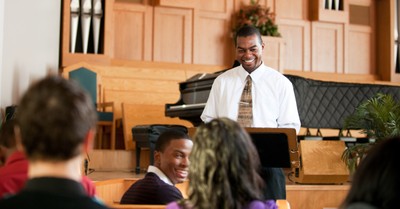Breaking the Cycle of Financing Vehicles
- Matt Bell SoundMindInvesting.com
- Published Feb 29, 2012

Our home may be our castle but for many people, their car is an extension of themselves. According to a study cited by Juliet Schor in her book, The Overspent American, nearly half of all car owners see their car as a reflection of who they are.
The belief that we are what we drive, coupled with the auto industry’s heavy use of planned obsolescence—the yearly rollout of new models with “must-have” new features—often leaves us on the vehicle financing treadmill.
We tend to build short-term relationships with our vehicles and long-term relationships with our vehicles’ loan officers.
A Better Way to Buy Cars
A better approach to buying cars is to build long-term relationships with our vehicles and send our vehicles’ loan officers packing. In fact, as you’ll see in my Recommended Spending Guidelines, not having a vehicle payment is an essential part of building a financial life that works.
I recommend keeping a car for at least ten years, preferably longer. The financial freedom that brings is far more beneficial than the short-lived thrill of driving a car with temperature-controlled cup holders. Here are some guidelines for how to break the cycle of financing cars.
1. Buy, don’t lease. Although you may pay less each month for a leased car than you do for a car you buy and finance, you won’t own anything at the end of the lease. You’ll just have to start making payments on another vehicle. In order to have the margin to be generous, save and invest, it helps a lot to have no monthly car payment.
2. If you’re currently making payments on a vehicle loan, keep making those payments even after your vehicle is paid off. Just send them to a savings account instead of your lender. If you can afford the payment today, you can afford it once the loan is paid off.
Then keep that vehicle for at least another five years, and when your vehicle is ready to be replaced you should have plenty of money to buy your next one with cash.
3. When it comes time to get another vehicle, it’s usually best to go for a well-maintained used car (but not always). Even vehicles used by dealers for test drives or loaners will be less expensive than a brand-new car. But vehicles that are one to two years old are where the real deals can be found; they often cost 30 to 40 percent less than the original price.
Still, I’ve loosened up on this one a little bit in recent years. If you’re paying cash, planning to keep your vehicle for 10 years or more, and you don’t opt for all the high margin extras, buying new may make sense.
4. When deciding which car to buy, choose one known for reliability. Consumer Reports lists its picks for the best used vehicles that cost less than $20,000 for free on its site.
5. Consider allof the costs. Some cars are more expensive than others to insure and maintain. When the exhaust system goes out on a dual-exhaust car, for example, it’s going to cost a lot more than it would on a car with a single-exhaust system.
Edmunds.com has a helpful True Cost to Own calculator that enables you to compare vehicles going back to 2006 based on the costs of fuel, insurance, maintenance, replacement parts, and depreciation. Call your insurance agent to get quotes on a few cars you’re considering as a point of comparison to what the Edmunds web site tells you. You can run a separate fuel economy comparison at Fueleconomy.gov.
There are certainly no moral prohibitions against heated seats or headlight wipers. However, moving through life without the ball and chain of a vehicle payment shackled to your leg will go a long way toward helping you live with financial freedom. Your car may not be able to parallel park itself, but you’ll get over that.





















